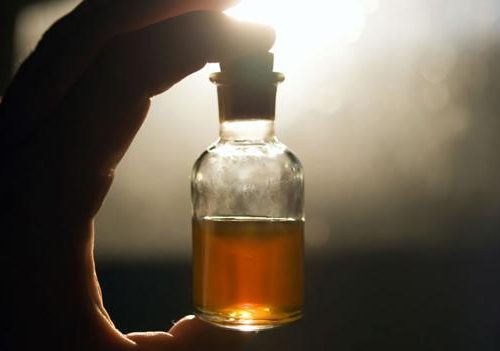SANANGA
Eye drops made from the roots and bark of the Tabernaemontana undulata shrub. The root and bark of this plant are obtained from the Kaxinawá and Yawanawá tribes. This sacred and potent medicine is used to heal physical and spiritual ailments by clearing the mind and energies and obtaining a new complete form of perception and focus.
It is made from the roots and bark of the Tabernaemontana undulata shrub
Una especie de «madera de la leche» de la familia Apocynaceae, y proviene directamente de las tribus amazónicas. Esta medicina sagrada y potente se utiliza para curar dolencias físicas y espirituales, limpiando la mente de las energías distractivas y permitiendo una nueva forma completa de percibir y enfocar. Este Sananga está impregnado de intenciones de absoluta claridad y concentración. Aunque se dice que Sananga contiene alcaloides de Ibogaine, en realidad hay poca evidencia que sugiera que esto sea cierto. Tabernaemontanta no es en realidad un género sino una «subfamilia», y por lo tanto también se clasifica como «Tabernaemontanoidae». McKenna informa que solo algunas de las varias docenas de plantas en esta subfamilia contienen ibogaína, otras como ‘undulata’
Use and medicinal effects
The pure spirit of Sananga supports a deep cleansing of blocked energies on the emotional, physical and spiritual levels. Sananga can balance and increase your energies, and find the roots of your diseases and blockages, leading to a complete balance, concentration and peace of mind. Moreover, the drops will expand your spiritual vision and awareness, and enhance your ability to read other people's intentions. Also, Sananga increases your long-range vision, which is important for visualizations and predictions of the future. In addition to this, the drops are also used to cure and improve a broad range of ocular problems (Lambert et al 2010), such as myopia, depth and color perception, the definition of images, and detection accuracy. Furthermore, this magical medicine is indicated in cases of severe ocular diseases, such as glaucoma, cataract and blindness.


Even though Sananga is famous for its effects on vision and visualization, this medicine is considered to be an indigenous all-purpose remedy. It is applied for febrifuge, emetic, diuretic, calmative, and several other diseases. Furthermore, Sananga is often used to cure skin illnesses (dermatitis), suppress appetite (Jernigan 2009), ease dental problems (Shepard 1999), and counteract snakebite wounds and poisoning, cure eye wounds and rheumatism (Sanz-Biset et al. 2009; Schultes 1979). Another important curative aspect of the Apocynaceae family is its widely explored antimicrobial activity, which showed that this family has strong antioxidant (Pereira et al. 2005), anticancer (Kingston et al. 1977; Gunasekera et al. 1980), antifertility/ contraceptive (Meyeret al. 1973), antipyretic (fever reducing), anti-inflammatory (Taesotikul et al. 2003).
Traditionally, tribes like the Matsés use Sananga as a hunting tool to obtain a sharp perception and concentration and to enable the detection of subtle movements in the dark jungle (Lambert et al 2010). Moreover, the drops can enable strong visualizations of the prey or the plant to be hunted, allowing for a quick and successful quest. Often Sananga is combined with other hunting tools, like Kambo, which further enhance the hunting skills. For most indigenous tribes, hunting means survival and therefore signifies an exceptionally important and crucial ability.
The tribes believe that becoming a good hunter and a good aimer, can only be achieved by using sacred plants. These sacred plants enhance the perception and sharpness, intention, sense of smell, endurance and luck. Therefore, hunting tools like Sananga and Kambo, account for about a quarter of all medicinal plants used in indigenous tribes (Shepard 1999).
Origin, creation and application
Las gotas para ojos de Sananga están hechas del arbusto Tabernaemontana undulata que crece en Acre, Brasil y otros países sudamericanos, y es conocido por la tribu Kaxinawás como «Mana Heins» y como «Becchete» para los Matsés. Mana Heins o Becchete pertenecen a la familia Apocynaceae, la misma familia a la que pertenece iboga (Tabernanthe iboga) (König et al., 2015). La corteza de la raíz de este arbusto primero se muele hasta obtener un polvo muy fino que se filtra varias veces a través de una malla de algodón y finalmente se extrae en un jugo. Cuando se aplica sobre la piel, las hojas de Sananga se suavizan con fuego y se aplican directamente sobre la parte afectada, o el látex de la raíz se mezcla con agua y se aplica con un paño (Van Beek et al., 1984). Sin embargo, también se puede aplicar con una bebida hecha con un extracto de agua de la corteza de la raíz.
Active ingredients and effects
Sananga is said to contain an abundance of alkaloids (Liu et al. 2013), It has been hinted that Sanaga includes the potent active ingredient is ibogaine (König et al. 2015), However, this statement has yet to be scientifically proven. Apart from ibogaine, several other alkaloids, such as coronaridine, quebrachidine, heyneanine, 3-hydroxycoronaridine, ibogamine and voacangine (Van Beek et al 1984; delle Monache et al. 1977) have been thought to also be contained in Sananga. All of these alkaloids have powerful psychoactive effects and a.o. can exert strong antibiotic effects.
There can be slight differences in the composition of Sananga: the Becchete from the Matsés tribe contains Tabernaemontana undulata roots, whereas the Sananga eye drops from the Kaxinawá tribe contains Kunakip (Tabernaemontana sananho) roots. Both of these roots are known to produce strong vision (waimatai) that are very useful for successful hunting (Jernigan 2009).
PRECAUTIONS
Dose
Before thinking about the dose, consider carefully your thoughts and the power of your intention: every remedy can only achieve what you are intending.
Only one drop per eye is enough for a powerful Sananga session. We recommend finding a calm and quiet place, either in nature or at home in a peaceful setting and with meditative music. The acute effects will wear off after 10-15 min, yet subtle after-effects can last for days. Make sure you lie down to enable a good application and leave your eyes closed during the session. It is important to apply one drop to both eyes, and do not wait to apply the second eye, apply it immediately to balance out the energies of both eyes. Thereafter, you should blink with your eyelids for a short while to distribute the liquid over the whole eye. Ideally, you find a second person who can apply the Sananga for you.


Shortly after the application to the eyes, most users report a strong burning and intense prickly pain sensation. Yet, these effects reside after a few minutes and can be alleviated by focusing on your breathing and by visualizing how the pain removes your blocked energies and brings deep healing. Moreover, you may also experience vomiting and bowel movements, which are further indications for the removal of blocked energies and illness. Try to surrender fully and relax as much as possible.
Similar to the iboga micro-dosing, you may choose to apply Sananga on daily bases. By doing so and with an intent focus on healing you can achieve profound results.
